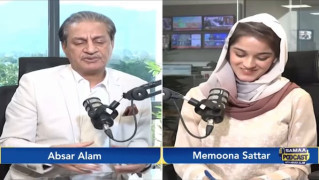modern.fakir
Chief Minister (5k+ posts)
Doubting India's 'fastest-growing' GDP stats, economists devise their own

Vendors work as they wait for customers at a garment store in a market in Mumbai, India, February 4, 2016. ─ ReutersLabourers works at the construction site of a residential building in Mumbai, India. ─ Reuters
Vendors work as they wait for customers at a garment store in a market in Mumbai, India, February 4, 2016. ─ ReutersLabourers works at the construction site of a residential building in Mumbai, India. ─ Reuters
MUMBAI: From rural motorbike sales to rail freight, economists and even the central bank are devising their own ways to measure Indian growth.
Their verdict? It's a good deal weaker than official data showing India to be the world's most dynamic big economy.
Doubts about the accuracy of India's gross domestic product (GDP) figures persist a year after its statisticians unveiled new readings they say better capture value addition down the goods and services supply chain.
Under the new methodology, economists expect India will report GDP growth of 7.3 per cent on Monday for the October-December quarter, according to a Reuters poll.
That's a touch slower than the previous quarter but comfortably surpasses the 6.8pc growth posted by China.
While that number appears strong, the lack of a historical series ─ still in the works ─ makes it hard to conclude that Asia's third-largest economy is doing well at a time when firms report poor sales, bank lending is slow and investment is weak.
"It doesn't feel like we are growing at 7-8 percent," said one official familiar with the Reserve Bank of India's research methods.
Like other economists, the RBI is now turning to hybrid models that mix elements of the old and new GDP methods to get a better feel for the underlying health of the economy.
The RBI looks at two-wheeler sales, car sales, rail freight, and consumer goods sales in rural areas "to get a better understanding of the ground realities", this official said.
The new data is a headache too for Finance Minister Arun Jaitley, who faces tough choices in his Feb 29 budget over whether to hike borrowing and spending to compensate for the sluggish private sector.
'India not the fastest growing economy in the world'
By its own proprietary measure, Ambit Capital estimates the economy may have grown an annualised 5 to 6pc in the October-December quarter.
“India is not the fastest growing economy in the world,” said Ritika Mankar Mukherjee, an Ambit economist in Mumbai.
"No matter how you cut it, while there are certain segments of the economy holding up such as IT or e-commerce, large parts of the economy are actually slowing down."
Economists have drawn on techniques used by colleagues covering China, where GDP figures are widely suspected to have been smoothed for years by its communist rulers to underpin popular faith in their economic stewardship.
Ambit looks at criteria such as motor vehicle sales, power demand, and imports of capital goods to determine the real rate of expansion.
Meanwhile, Citigroup has developed a heat map of 18 economic activities including two-wheeler sales, air traffic, and diesel sales.
Downbeat assessments of growth would more closely correspond with trends under the old GDP calculation method that until a year ago showed India experiencing the longest spell of sub-5pc growth in a quarter of a century.
The slowdown is especially pronounced in rural areas, which have suffered two consecutive dry years.
"Demand is very weak because farmers' income has been squeezed by drought," said a Mahindra and Mahindra tractor dealer in Aurangabad, in the state of Maharashtra, who reckons his sales are down more than 20pc from a year ago.
'New GDP data captures efficiency'
Ashish Kumar, who recently retired as the head of India's statistics office, says economists are using the wrong gauges to understand data that measures value addition.
"You have to understand that the new GDP data essentially captures efficiency," he told Reuters. "Comparing it with volume-based indicators would be a mistake."
RBI Governor Raghuram Rajan has also endorsed the new GDP readings, saying sliding input costs are offsetting shrinking corporate revenues and inflating value-addition.
Put more simply, sales may be slow but profits are rising.
Still, the statistics office is readying tools to better capture services sector data for GDP calculations and supplement it with employment generation data.
"Once we have all these data points, we will get a better picture," said Kumar.

Vendors work as they wait for customers at a garment store in a market in Mumbai, India, February 4, 2016. ─ ReutersLabourers works at the construction site of a residential building in Mumbai, India. ─ Reuters
Vendors work as they wait for customers at a garment store in a market in Mumbai, India, February 4, 2016. ─ ReutersLabourers works at the construction site of a residential building in Mumbai, India. ─ Reuters
MUMBAI: From rural motorbike sales to rail freight, economists and even the central bank are devising their own ways to measure Indian growth.
Their verdict? It's a good deal weaker than official data showing India to be the world's most dynamic big economy.
Doubts about the accuracy of India's gross domestic product (GDP) figures persist a year after its statisticians unveiled new readings they say better capture value addition down the goods and services supply chain.
Under the new methodology, economists expect India will report GDP growth of 7.3 per cent on Monday for the October-December quarter, according to a Reuters poll.
That's a touch slower than the previous quarter but comfortably surpasses the 6.8pc growth posted by China.
While that number appears strong, the lack of a historical series ─ still in the works ─ makes it hard to conclude that Asia's third-largest economy is doing well at a time when firms report poor sales, bank lending is slow and investment is weak.
"It doesn't feel like we are growing at 7-8 percent," said one official familiar with the Reserve Bank of India's research methods.
Like other economists, the RBI is now turning to hybrid models that mix elements of the old and new GDP methods to get a better feel for the underlying health of the economy.
The RBI looks at two-wheeler sales, car sales, rail freight, and consumer goods sales in rural areas "to get a better understanding of the ground realities", this official said.
The new data is a headache too for Finance Minister Arun Jaitley, who faces tough choices in his Feb 29 budget over whether to hike borrowing and spending to compensate for the sluggish private sector.
'India not the fastest growing economy in the world'
By its own proprietary measure, Ambit Capital estimates the economy may have grown an annualised 5 to 6pc in the October-December quarter.
“India is not the fastest growing economy in the world,” said Ritika Mankar Mukherjee, an Ambit economist in Mumbai.
"No matter how you cut it, while there are certain segments of the economy holding up such as IT or e-commerce, large parts of the economy are actually slowing down."
Economists have drawn on techniques used by colleagues covering China, where GDP figures are widely suspected to have been smoothed for years by its communist rulers to underpin popular faith in their economic stewardship.
Ambit looks at criteria such as motor vehicle sales, power demand, and imports of capital goods to determine the real rate of expansion.
Meanwhile, Citigroup has developed a heat map of 18 economic activities including two-wheeler sales, air traffic, and diesel sales.
Downbeat assessments of growth would more closely correspond with trends under the old GDP calculation method that until a year ago showed India experiencing the longest spell of sub-5pc growth in a quarter of a century.
The slowdown is especially pronounced in rural areas, which have suffered two consecutive dry years.
"Demand is very weak because farmers' income has been squeezed by drought," said a Mahindra and Mahindra tractor dealer in Aurangabad, in the state of Maharashtra, who reckons his sales are down more than 20pc from a year ago.
'New GDP data captures efficiency'
Ashish Kumar, who recently retired as the head of India's statistics office, says economists are using the wrong gauges to understand data that measures value addition.
"You have to understand that the new GDP data essentially captures efficiency," he told Reuters. "Comparing it with volume-based indicators would be a mistake."
RBI Governor Raghuram Rajan has also endorsed the new GDP readings, saying sliding input costs are offsetting shrinking corporate revenues and inflating value-addition.
Put more simply, sales may be slow but profits are rising.
Still, the statistics office is readying tools to better capture services sector data for GDP calculations and supplement it with employment generation data.
"Once we have all these data points, we will get a better picture," said Kumar.
Last edited by a moderator:




























